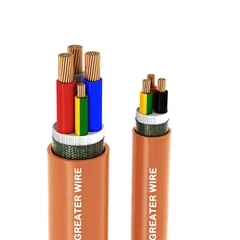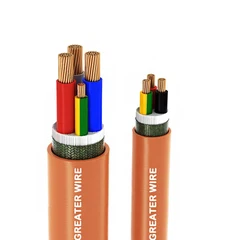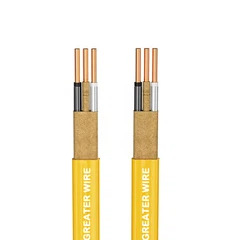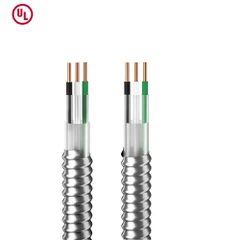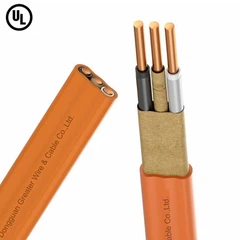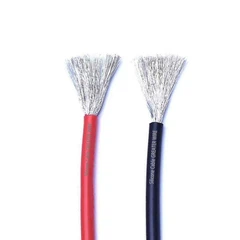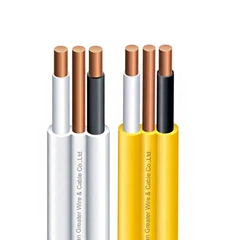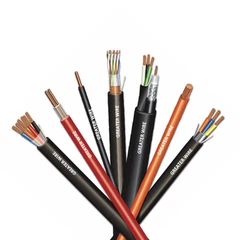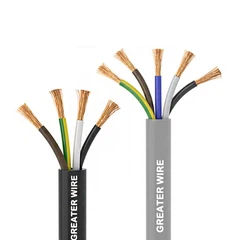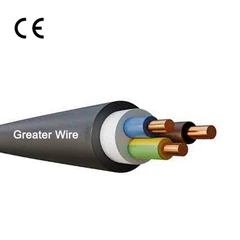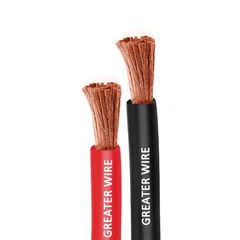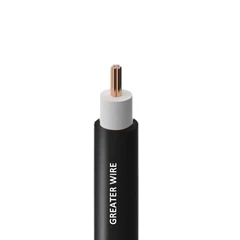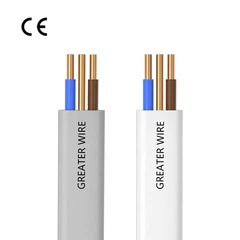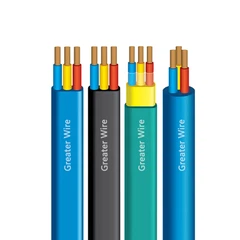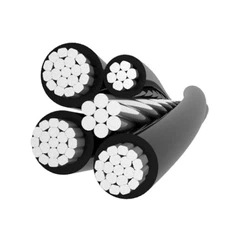With the increasing emphasis on renewable energy around the world, solar photovoltaic (PV) systems have become an important energy solution for many homes and commercial buildings. During the installation of a PV system, choosing the right cables (solar cables) and wires (solar wires) is key to ensuring the long-term stable operation of the system, and the choice of conduits directly affects the safety, durability and efficiency of the system. This article will explore in detail the various types of conduits used in PV systems and how they protect solar cables and wires during installation.
1. Basic requirements for cables and wires in PV systems
In the electrical connection of a PV system, solar cables and wires assume the core function of power transmission. Their selection directly affects the safety, efficiency and reliability of the system. Compared with ordinary cables, PV cables usually have the following characteristics:
High temperature resistance: Solar cables are usually used in outdoor environments and may be exposed to high temperatures and ultraviolet radiation, so their insulation materials and outer sheaths must have high temperature resistance and UV resistance.
High voltage carrying capacity: Modern PV systems usually have high operating voltages, with common voltage levels including 600V, 1000V and 1500V, so solar cables need to be able to withstand higher voltages.
Water resistance and corrosion resistance: Since cables are usually exposed to humid environments, especially underground and outdoor environments, solar cables need to have good waterproof and corrosion resistance.
Mechanical damage resistance: Cables may suffer certain physical damage during installation, so their structure needs to be resistant to stretching and tearing.
The correct selection of solar cables and wires can ensure the long-term and efficient operation of the system and avoid electrical failures or safety issues caused by cable damage.
2. The role of conduits in photovoltaic systems
In photovoltaic systems, conduits are important components used to protect solar cables and wires. The main functions of conduits include:
Physical protection: Conduits provide physical protection for cables to prevent mechanical damage to cables during installation.
Prevent external factors: Conduits can protect cables from external factors such as ultraviolet radiation, chemical corrosion, extreme climate (such as storms, snow) and animal bites.
Improve electrical safety: Conduits help prevent cables from being exposed to flammable materials or humid environments, thereby reducing the risk of fire or electrical accidents.
Simplify installation and maintenance: Conduits can organize cable routing, reduce cable entanglement and confusion, and facilitate subsequent inspection and maintenance.
3. Common conduit types used in photovoltaic systems
In the installation of photovoltaic systems, common conduit types include metal conduits, non-metallic conduits, and flexible conduits. Each conduit type has its own unique characteristics and application scenarios. Choosing the right conduit type can help improve the safety and reliability of the system.
3.1 Metallic conduits (such as EMT and IMC)
Metallic conduits are mainly used in photovoltaic systems that require additional physical protection, especially in areas that are vulnerable to physical damage or potential dangers. These conduits are usually made of aluminum or steel and have high strength and durability.
EMT (Electrical Metallic Tubing): EMT is a lightweight metal conduit commonly used for cable protection in indoor and outdoor environments. EMT has average corrosion resistance, but is suitable for drier or milder environments. It is suitable for smaller current loads and is easy to install.
IMC (Intermediate Metal Conduit): IMC is more rugged than EMT and is suitable for cable protection in harsh environments, especially in industrial or outdoor conditions. It has good corrosion resistance and collision resistance, and can provide stronger physical protection for solar cables.
The advantages of metal conduits are their sturdiness and strong protection for cables, while the disadvantages are that their installation process is complicated and costly.
3.2 Non-metallic conduits (such as PVC conduits)
Non-metallic conduits are the most commonly used conduit type in photovoltaic systems. Common non-metallic conduit materials include PVC (polyvinyl chloride) and HDPE (high-density polyethylene), which are light in weight, low in cost, and easy to install.
PVC conduits (polyvinyl chloride conduits): PVC conduits are very common photovoltaic cable protection tubes and are suitable for most photovoltaic system installation occasions. PVC conduits have good corrosion resistance, water resistance, and UV resistance, and can operate stably in long-term outdoor exposure environments. PVC conduits are easy to install and have low costs, so they are widely used in the protection of photovoltaic cables.
HDPE conduits (high-density polyethylene conduits): HDPE conduits have better tensile and impact resistance than PVC conduits, and are suitable for use in more severe environments, especially in application scenarios that require high pressure resistance or mechanical damage prevention. HDPE conduits are also more flexible and can cope with complex wiring requirements.
The advantages of non-metallic conduits are light weight, low cost and easy installation. The disadvantage is that their mechanical strength is slightly inferior to that of metal conduits and they are easily affected by external impact or extreme weather.
3.3 Flexible conduits (such as FMC conduits)
Flexible conduits are usually used in photovoltaic systems that need to bend and adapt to complex installation environments, especially in places where space is small or equipment needs to be moved frequently. The material of flexible conduits is usually metal or plastic, with high flexibility and adjustability.
FMC (Flexible Metallic Conduit): FMC conduit is a flexible metal conduit, usually made of fine metal wire, suitable for environments with small space and flexible wiring. It is more flexible than EMT and IMC and suitable for complex installation environments.
LFMC (Liquid-tight Flexible Metallic Conduit): LFMC conduit has stronger waterproof ability than FMC conduit and is suitable for areas with heavy moisture or requiring additional waterproof protection. It is suitable for outdoor or outdoor environments and can effectively prevent moisture from entering the conduit.
The advantage of flexible conduits is their flexibility and adaptability, especially in places where equipment is frequently moved or installation space is limited. The disadvantage is that they are more expensive and slightly inferior to rigid conduits in terms of protection.

4. Basis for choosing conduits
When choosing the type of conduits in a PV system, the following key factors need to be considered:
4.1 Environmental conditions
The choice of conduits should be determined based on the specific conditions of the installation environment. For PV systems that need to be used in harsh environments (such as high temperatures, strong UV rays, and humid areas), it is important to choose materials with stronger UV resistance and corrosion resistance.
Outdoor use: For outdoor installations, PVC and HDPE conduits are common choices, which have good UV resistance.
Underground installation: For underground cable protection, metal conduits or HDPE conduits are usually the first choice, which can withstand the pressure and damage in underground environments.
Wet or underwater environment: If the cable needs to be exposed to water or high humidity, choose liquid-tight flexible conduit (LFMC) or conduit materials with higher waterproof grades.
4.2 Installation requirements
Installation space: If the installation environment of the PV system is small or the cable needs to pass through complex bends, it will be more suitable to choose flexible conduits (such as FMC).
Cable type and voltage level: For PV systems with higher voltage levels, metal conduits such as EMT or IMC can provide stronger physical protection.
4.3 Cost and maintainability
Cost: PVC conduits are usually the most cost-effective option, especially in projects with limited budgets.
Maintainability: Flexible conduits provide greater flexibility and convenience if the cables need to be inspected or maintained in the future.

